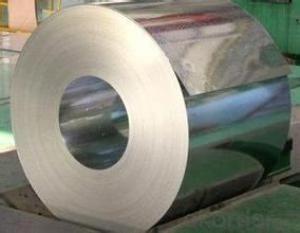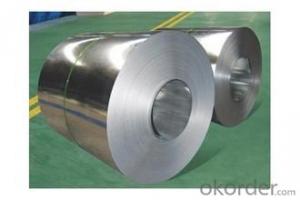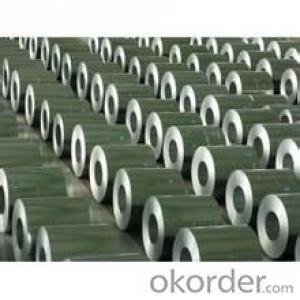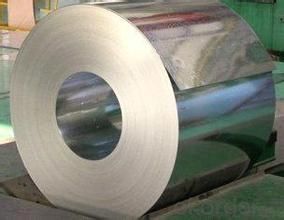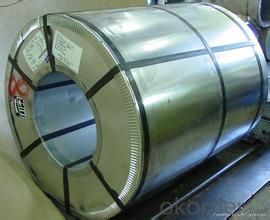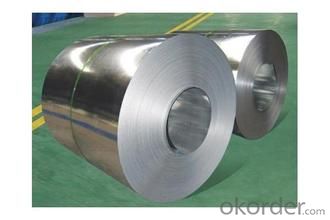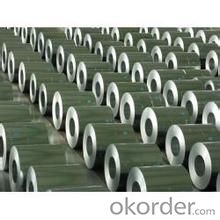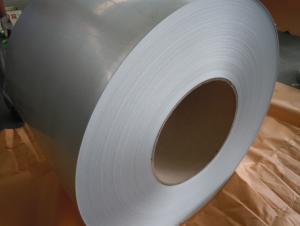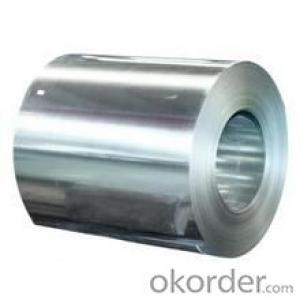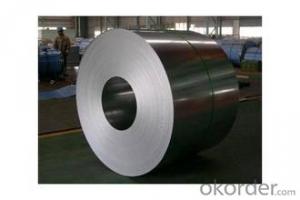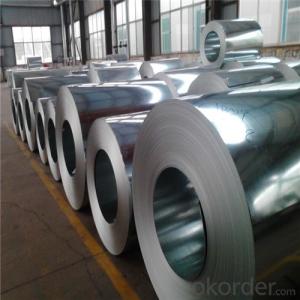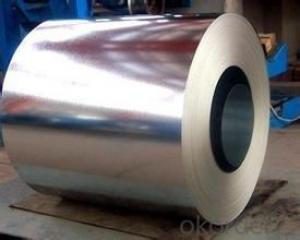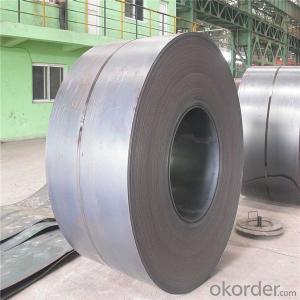Hot-Dip Galvanized/ Aluzinc Steel in Good Quality
- Loading Port:
- Tianjin
- Payment Terms:
- TT OR LC
- Min Order Qty:
- 20 m.t.
- Supply Capability:
- 5000000 m.t./month
OKorder Service Pledge
OKorder Financial Service
You Might Also Like
Hot-dip galvanized steel coils are available with a pure zinc coating through the hot-dip galvanizing process. It offers the economy, strength and formability of steel combined with the corrosion resistance of zinc. The hot-dip process is the process by which steel gets coated in layers of zinc to protect against rust. It is especially useful for countless outdoor and industrial applications.
Description:
1.Mateials:SGCC,DX51D / DX52D /S250,280GD
2.Size:width:600-1250mm(900mm,1215mm,1250mm,1000mm the most common)
thickness:0.15-2.0mm
length:1000-6000mm,as your require
3.Zinc coating :60-180g( as required)
4.Coil id:508mm
5.Coil weight: 3-5MT(as required)
6. Surface:regular/mini/zero spangle, chromated, skin pass, dry etc.
Service:
1,on time delivery
2,high quality with competitive price
3,good service
4,long-term cooperation
5, rely on honors
Applications of our Galvalume Coil:
Galvalume Coil widely used for roofing products, It is also the ideal base material for Prepainted Steel Coil.
1. roofing
2. gutters
3. unexposed automotive parts
4. appliances
5. furniture
6. outdoor cabinetry
- Q: What are the industries that consume the most steel?
- I'm guessing manufacturing
- Q: How are steel coils coated for added protection?
- To enhance their durability and resistance to corrosion, steel coils undergo a process known as coil coating, wherein a protective layer is applied onto their surfaces. There are several methods employed to coat steel coils, but the most commonly used one is the continuous coil coating process. Under this process, the steel coil is unwound and extensively cleansed to eliminate any contaminants or impurities on its surface. This step ensures proper adhesion of the coating material. Once the steel coil is cleansed, it undergoes a pre-treatment to enhance its surface properties. Typically, this involves the application of a chemical solution or a conversion coating onto the coil's surface. The aim of this step is to create a surface that is receptive to the coating material and improves its adhesion. Following the pre-treatment, the steel coil is coated with a protective layer, which can be in the form of liquid paint, powder coating, or a combination of both. The coating material is applied evenly onto the coil's surface using techniques like roll coating, spray coating, or electrostatic coating. Once the coating is applied, the steel coil is cured or dried using heat or, in some cases, ultraviolet light. This curing process ensures a strong bond between the coating material and the steel surface, resulting in the desired protective properties. The coated steel coil then undergoes inspection to ensure quality control measures like thickness, adhesion, and appearance are met. If the specifications are satisfied, further processing may take place, involving cutting, slitting, or forming the coil into the desired shape or size. In conclusion, the process of coating steel coils for added protection involves thorough cleansing, pre-treatment, application of a protective coating, curing, and quality control. This ensures that the steel coils exhibit excellent resistance to corrosion, abrasion, and other environmental factors, making them suitable for a wide range of applications across various industries.
- Q: What are the common methods of painting steel coils?
- There are several common methods used for painting steel coils, depending on the specific requirements and desired outcomes. Here are some of the most commonly employed methods: 1. Coil coating: This is the most common method used for painting steel coils. It involves applying a layer of paint on the coil's surface before it is shaped into its final form. The coil is first cleaned and pre-treated with chemicals to ensure proper adhesion of the paint. Then, the paint is applied using various techniques such as roll coating, spray coating, or dip coating. The coil is then cured in an oven to ensure proper drying and adhesion of the paint. 2. Electrostatic painting: This method involves using an electrostatic charge to apply the paint onto the steel coil. The coil is first cleaned and pre-treated, and then an electrostatic charge is applied to the paint particles. The charged particles are attracted to the grounded coil, resulting in an even and efficient paint application. This method is often used for high-performance coatings as it provides excellent coverage and adhesion. 3. Powder coating: Powder coating is a popular method for painting steel coils, especially for applications that require a durable and long-lasting finish. In this method, a dry powder paint is applied to the coil's surface electrostatically. The powder adheres to the coil due to the electrostatic charge, and then the coil is heated in an oven to melt and cure the powder, forming a smooth and protective coating. 4. Spray painting: Spray painting is commonly used for smaller steel coils or touch-up applications. It involves using a spray gun to apply the paint onto the coil's surface. The coil is cleaned and pre-treated, and then the paint is sprayed in a controlled and even manner. This method allows for precise control and customization of the paint application. Overall, the choice of painting method depends on factors such as the desired finish, durability requirements, cost considerations, and the specific application of the steel coil. Each method has its own advantages and limitations, and it is important to select the most suitable method based on the specific needs and constraints of the project.
- Q: What are the different types of steel coil coatings for heat resistance?
- Heat resistance is achieved through the use of different types of steel coil coatings. These coatings are designed specifically to safeguard the steel surface, preventing it from deteriorating or oxidizing under high temperatures. Organic coatings, such as epoxy, polyester, or polyurethane, are commonly used. They form a protective barrier against heat and prevent the steel from corroding or oxidizing. Organic coatings are typically employed in situations where moderate heat resistance is necessary. Another option is inorganic coatings, made from ceramic or metallic materials. These coatings offer excellent heat resistance and can endure extremely high temperatures. Industries like automotive, aerospace, and power generation frequently utilize inorganic coatings, as their components are exposed to intense heat. Specialized coatings are also available to meet specific heat resistance requirements. Silicone coatings, for instance, exhibit exceptional heat resistance and can withstand temperatures reaching 600°C (1112°F). They find common use in applications like exhaust systems, ovens, and industrial furnaces. Some steel coil coatings may also incorporate additives or fillers to enhance their heat resistance properties. These additions improve the coating's ability to withstand high temperatures and provide superior protection against heat-related issues. In conclusion, a range of steel coil coatings is available for heat resistance, including organic coatings, inorganic coatings, and specialized coatings. The choice of coating depends on the specific heat resistance requirements of the application. Factors such as temperature range, duration of exposure, and environmental conditions must be taken into account when selecting the appropriate coating.
- Q: what is the difference between stainless steel 304 (AISI 304) and stainless steel 310 (AISI 310) COR-TEN A
- Weathering steel will rust, but the rust will be adherant and not flake off and be replaced by new rust. Therefore once it rusts it will pretty much stop rusting any more. One (severe) down side is that anything around it will be streaked with rust stains and it will look awful. Some bozo with the Texas Department of Transportation designed a number of freeway interchange overpasses here in Houston using Cor-Ten steel and all of the concrete supports are streaked with red rust stains and it looks like hell. Cameron built an office building here in Houston with a Cor-Ten facade and it is streaked with rust too. They should have gone ahead and spent the money and painted them, but they didn't.
- Q: How are steel coils used in the manufacturing of automotive fenders?
- Steel coils are used in the manufacturing of automotive fenders by being processed and shaped into the desired fender shape. The coils are first uncoiled and then sent through a series of machines that cut and shape the steel into the specific dimensions and contours required for the fender design. These shaped steel pieces are then welded or bolted together to form the final fender structure, which is later painted and installed onto the vehicle.
- Q: I have two guitars, a nylon stringed classical, and a steel stringed acoustic, I find the nylon strings easier to play, but doesn't have as good of sound as the steel stringed, and when I play with the steel strings, it really hurts my fingers, and if I play just a little bit, it feels like the high e string is going to cut my finger. Are the strings too high? What can I do to make the steel strings easier to play?
- Your steel-string acoustic should not be all that much harder to play than your nylon string acoustic. Classical guitars have stretchier strings, but they also normally have higher action (string height). It sounds like your steel-string may have a problem. A typical low action would be around 0.090 gap between the low E string and the top of the 12th fret, and 0.070 between the high E and the top of the 12th fret. If yours is a lot higher than that, having it professionally set up will probably help. If it's a very cheap guitar, replacement might be the best option. Why do you need to choose between classical and steel-string? You already own both.
- Q: I bought my Gerber Scout for 29 bucks at the local Walmart a couple months ago, and so far it's performed better than any of my previous knives (a couple of low quality Bucks, and a Winchester). However, my friend just bought a 50 dollar Buck knife and I absolutely love it, so I'm debating trading mine in and pitching in a bit of cash for the same kind.What troubles me is the fact that everybody seems to be bashing 440A steel. I hear a lot of bad things about it; how it is soft, chips easy, dull quickly, etc. How bad is 440A steel really, and would it be worth trading in my Gerber plus about 30 cash for a Buck Vantage Pro? Apparently the Vantage Pro uses S30V steel, so is it really that big of an upgrade, from 440A to S30V? Thank you.
- Its the standard for most knives and its the easiest to sharpen, I have a couple 440 steel knives and they have never failed me, my oldest one is 11 years old and I have stabbed multiple people(in self defense, cut open backpacks, seat belts, fishing string, limes, thin rope, jeans, jackets, pockets, seats, popped tires, moved hot charcoal and other stuff, it just has to be sharpened every now and then. Although I really like carbon knives like KA-BAR's those are amazing and are the only fixed blade knife I would ever buy.
- Q: What brand steel tapes are of good quality?
- Personal feeling is also good for the Great Wall Seiko tape, upstairs several estimates are the production of steel tape manufacturers, of course, that their goods well. Our unit now buy all the Great Wall Seiko goods, said the tape is good, not because it is so durable
- Q: I've been looking into battle-ready katanas a lot lately. And I've come across some debates between the best forges and steels to be used for them. The functional katanas I use now are Musashi brand katanas, using 1045 carbon steel. They each cost roughly $200-$250. The straight carbon steels are mentioned in the debates, but they aren't very sophisticated in their design. Now the higher end of this middle class of katana ($250-$1000) uses higher carbon. spring, damascus, and other various steels and combinations. I've heard a lot about the strength of damascus steel and it's cutting power. But I look for more than that. I've also been looking at (and for) durability, flexibility, and how well it stands up to contact. So I guess what I'm asking is for the opinion of people who have used these steels, and an answer on what the community thinks is the best steel for a mid range ($250-$1000) battle-ready katana. Looking forward to some good answers.
- Go okorder / They have a list of the different types of steel and the qualities of them. Bugei Trading sells very good swords. i prefer the Cheness katana simply because they sell a nice sword at a lower price. Currently I use the Cheness Kazi Ko-Katana. It has a shorter blade length with allows me to do the draw properly for the style I practice. Hope this helps! P.S. just for reference, when I hear the term, Battle Ready, it makes my skin crawl. That terminology simply is not used by experienced martial artists. It is like using the word Studio to describe a martial arts school. EDIT: Peter Gun makes a good point about steel. For what its worth, Ive had several Paul Chen katana.
Send your message to us
Hot-Dip Galvanized/ Aluzinc Steel in Good Quality
- Loading Port:
- Tianjin
- Payment Terms:
- TT OR LC
- Min Order Qty:
- 20 m.t.
- Supply Capability:
- 5000000 m.t./month
OKorder Service Pledge
OKorder Financial Service
Similar products
Hot products
Hot Searches
Related keywords
